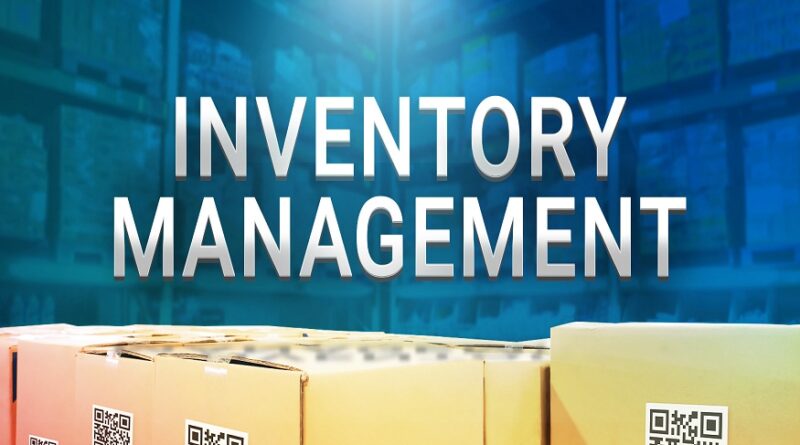Inventory Management Techniques for Small Businesses
Wholesale inventory management software is a critical aspect of running a successful small business. Whether you are a retailer, wholesaler, or manufacturer, effectively managing your inventory can help optimize cash flow and improve customer satisfaction.In this blog post, we will explore some key inventory management techniques tailored specifically for small businesses, including the advantages of acquiring an exhibition trailer for sale to enhance marketing efforts.
Challenges Faced By Small Businesses and How Inventory Management Aids Them
Limited Capital
Small businesses often operate on tight budgets, making it challenging to invest in excess inventory. However, inadequate inventory can lead to stockouts and lost sales opportunities. Implementing inventory management techniques using wholesale inventory management software such as just-in-time (JIT) inventory or dropshipping can help minimize inventory holding costs while ensuring products are available when needed. JIT allows businesses to order inventory only as needed, reducing excess stock and freeing up capital for other business needs.
Fluctuating Demand
Small businesses often struggle to predict demand accurately, leading to either excess inventory or stockouts. This uncertainty can result in increased carrying costs or missed revenue opportunities. Utilizing custom inventory management system tools and historical sales data can help small businesses anticipate customer demand more accurately. By aligning inventory levels with expected demand, businesses can optimize stock levels and minimize the risk of stockouts or overstock situations.
Supplier Reliability
Small businesses rely heavily on their suppliers to provide consistent and reliable inventory replenishment. However, supplier delays or disruptions can disrupt operations and lead to stockouts. Building strong relationships with trusted suppliers and maintaining open lines of communication can help mitigate these risks. Additionally, diversifying suppliers or implementing backup sourcing strategies can provide small businesses with alternative options in case of unforeseen disruptions.
Techniques for Effective Inventory Management
Utilize Inventory Tracking Systems
Invest in inventory tracking systems or software that suits the needs and scale of your business. These systems can help automate inventory management tasks, track stock levels in real-time, and generate reports for informed decision-making. Look for user-friendly options that integrate with your existing processes and provide features like barcode scanning, automatic reordering, and multi-location tracking.
Adopt the ABC Analysis Technique
The ABC analysis categorizes inventory items into three groups based on their value and importance:
A items: High-value items that contribute significantly to revenue.
B items: Moderate-value items with moderate sales volume.
C items: Low-value items with relatively low sales volume.
By prioritizing inventory management efforts based on this classification, businesses can focus on optimizing the management of high-value items. They can implement simpler strategies for low-value items. This helps in effective resource allocation and reduce the risk of stockouts for critical items.
Implement Just-in-Time (JIT) Inventory
Just-in-Time (JIT) inventory management involves receiving goods only when they are needed in the production process or for customer orders. This approach minimizes inventory holding costs, reduces the risk of overstocking, and enhances cash flow by freeing up capital.However, implementing JIT requires strong supplier relationships, reliable logistics, and accurate demand forecasting. Small businesses can start by gradually transitioning to JIT by closely monitoring demand patterns, establishing trust with suppliers, and optimizing order quantities to minimize excess inventory.
Establish Safety Stock Levels
While reducing excess inventory is essential for cost savings, maintaining adequate safety stock levels is crucial to prevent stockouts and meet customer demand during unexpected spikes or supply chain disruptions. Calculate safety stock levels based on factors such as lead times, demand variability, and supplier reliability to ensure buffer inventory for unforeseen circumstances.
Regularly Conduct Inventory Audits
Schedule regular inventory audits to reconcile physical inventory counts with recorded inventory levels in your system. This helps identify discrepancies, shrinkage, and inefficiencies in inventory management processes. Conducting audits allows businesses to maintain accuracy in inventory records, identify slow-moving or obsolete stock, and make data-driven decisions for inventory optimization.
Embrace Demand Forecasting Techniques
Accurate demand forecasting is essential for effective inventory management, especially for small businesses with limited resources. Utilize historical sales data, market trends, and seasonality patterns to forecast future demand for your products. Consider factors such as promotions, economic indicators, and industry events that may impact demand.
Small businesses can leverage B2B QuickBooks Online ecommerce integration to predict future sales volumes more accurately. Additionally, monitor changes in customer preferences and market dynamics to adapt your forecasts accordingly and minimize the risk of stockouts or overstocking.
Optimize Order Fulfillment Processes
Streamline order fulfillment processes to reduce lead times, improve order accuracy, and enhance customer satisfaction. Implement ecommerce management with multilanguage, efficient picking, packing, and shipping procedures to fulfill customer orders promptly. Utilize technology such as order management systems, barcoding, and automated workflows to streamline operations and minimize errors.
Conclusion
Effective inventory management is essential for the success and sustainability of small businesses. The implementation of the right techniques and leveraging technology help small businesses optimize inventory levels, reduce costs, and improve customer satisfaction. Prioritize continuous improvement and adaptability in your inventory management strategies to meet evolving market demands and stay competitive in today’s dynamic business landscape.

